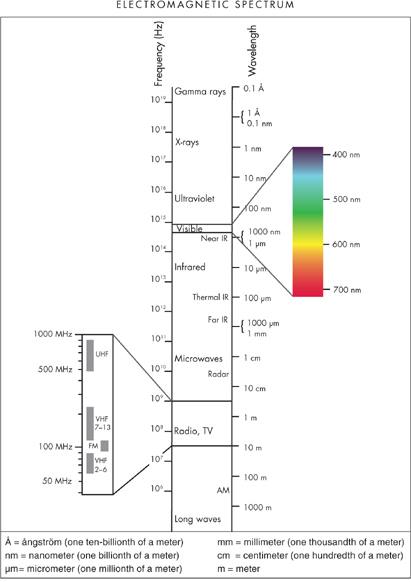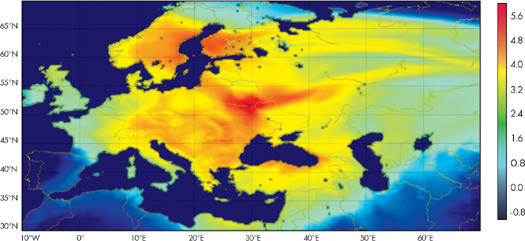

Visible light is but a tiny part of the energy that affects us. The electromagnetic rays beyond our visibility toward the top grow increasingly dangerous to humans as their wavelengths grow shorter.
SOURCES OF RADIATION EXPOSURE IN THE UNITED STATES

Radiation received by people in the United States is almost evenly divided between man-made and natural sources. People living in most other parts of the world receive less radiation from medical procedures and nuclear medicine.
TERRESTRIAL GAMMA-RAY EXPOSURE AT 1 METER ABOVE GROUND

The annual terrestial radiation we receive is affected by where we live.
CHERNOBYL, DISPERSAL OF CESIUM-137

FUKUSHIMA DAIICHI, DISPERSAL OF CESIUM-137

Cesium-137 carried by the wind after nuclear accidents in Chernobyl and Fukushima. The red, orange, and yellow show a much greater release of radiation and a much wider dispersal from Chernobyl than from Fukushima. (These illustrations are results of numerical modeling, and quantitative errors made in the field of radionuclides modeling are usually large. They do, however, show the difference between the two accidents.)

LIFETIME CANCER RISK #2

Two ways of looking at the probable cancer risk associated with radiation released from Fukushima Daiichi compared to other health hazards.